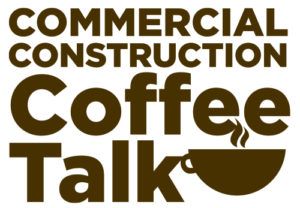Introduction
Automated systems are becoming increasingly common in warehouse operations, and with good reason. Automation can greatly improve efficiency, reduce labor costs, and increase accuracy of operations.
However, automated systems can also be expensive to implement, may be difficult to maintain, and require specialized personnel. It is important to consider the potential advantages and drawbacks of automation before making the decision to invest in automated systems.
This article discusses the pros and cons of using automated systems in warehouse operations. It also covers the factors to consider when deciding to invest in automation. It also covers common types of automated solutions, steps for successful integration, and real-life examples of successful implementations.
Advantages of Implementing Automated Systems
Automated systems offer a range of advantages for warehouse operations, particularly in improving the speed, accuracy, and efficiency of processes. Automated systems can replace labor-intensive manual processes, resulting in a significant reduction in operating costs. Automated systems can also reduce the need for special training, since they are often easier to use than manual processes.
Furthermore, automated systems provide improved visibility into warehouse operations, allowing managers to monitor and measure performance and make more informed decisions. In addition, automated systems can help reduce the risk of human errors, as well as minimize labor-related accidents. Automated systems can give warehouse operations an edge over their competitors by improving customer satisfaction. These systems ensure that orders are filled quickly and accurately, which can lead to happier customers.
Potential Drawbacks of Automation in Warehouses
Automation of warehouse operations may bring both advantages and drawbacks. The potential drawbacks include the cost of the initial setup, the cost of upkeep, and the risk of malfunction. In the short-term, implementing automated systems can be expensive and may require large investments in technology and training.
Once the system is up and running, there are ongoing maintenance and upgrade costs. Additionally, issues such as power failure or programming errors can cause the system to malfunction, resulting in costly delays or mistakes in the supply chain.
To avoid issues in the long run, it is important that warehouses incorporate measures to ensure the reliability and success of their automated solutions.
Factors to Consider When Deciding to Automate Your Warehouse Operations
Before deciding to automate your warehouse operations, it is important to consider a few key factors. Cost is always an important factor when making a major decision like automating a warehouse, so the total investment of the automation should be weighed against potential savings and other benefits.
Additionally, you should consider the necessary time and resources required to implement and maintain the automated system, as well as the potential disruption to existing operations. Finally, the expected return on investment should be estimated to ensure that the automated system will provide meaningful long-term benefits.
Common Types of Automated Solutions Used in Warehouses
Automated systems are quickly becoming the norm in the warehouse industry. Automation can help streamline processes, boost efficiency, and reduce labor costs. Some of the most popular automated solutions used in warehouses include robotics, automated guided vehicles, automated storage and retrieval systems, material handling systems, conveyor systems, and warehouse management systems.
Robotics can be used for a variety of tasks, such as sorting, packing, and palletizing goods. Automated guided vehicles are mobile robots that can autonomously move goods from one area of the warehouse to another.
Automated storage and retrieval systems can store and retrieve goods with minimal human labor. Material handling systems are used to move goods within the warehouse, and conveyor systems are used to transport goods from one point to another.
Finally, warehouse management systems track and manage inventory, order fulfillment, and other warehouse operations. Each of these automated solutions comes with its own set of pros and cons that should be weighed carefully before making an investment. With the right implementation, however, these solutions can provide the warehouse with tremendous benefits.
Best Practices for a Successful Integration
When considering warehouse automation, it is crucial to select the appropriate system for your business. To guarantee a seamless and triumphant integration, here are some recommended practices you should follow. Firstly, ensure that the system aligns with your current warehouse architecture and any preexisting systems.
Ensure you have the necessary software and hardware to support the system. Additionally, it is important to have a clear understanding of the system and its capabilities. Then, develop a plan for the integration process and ensure that all necessary staff are trained and prepared to use the system.
This includes training on how to troubleshoot any issues that arise. Finally, as the system is implemented, monitor and review its performance to ensure it meets your expectations. Regular check-ins and maintenance can help to keep the system running smoothly.







 The 2024 virtual Men’s Round Table will be held Q4, 2024, date TBD.
The 2024 virtual Men’s Round Table will be held Q4, 2024, date TBD.












